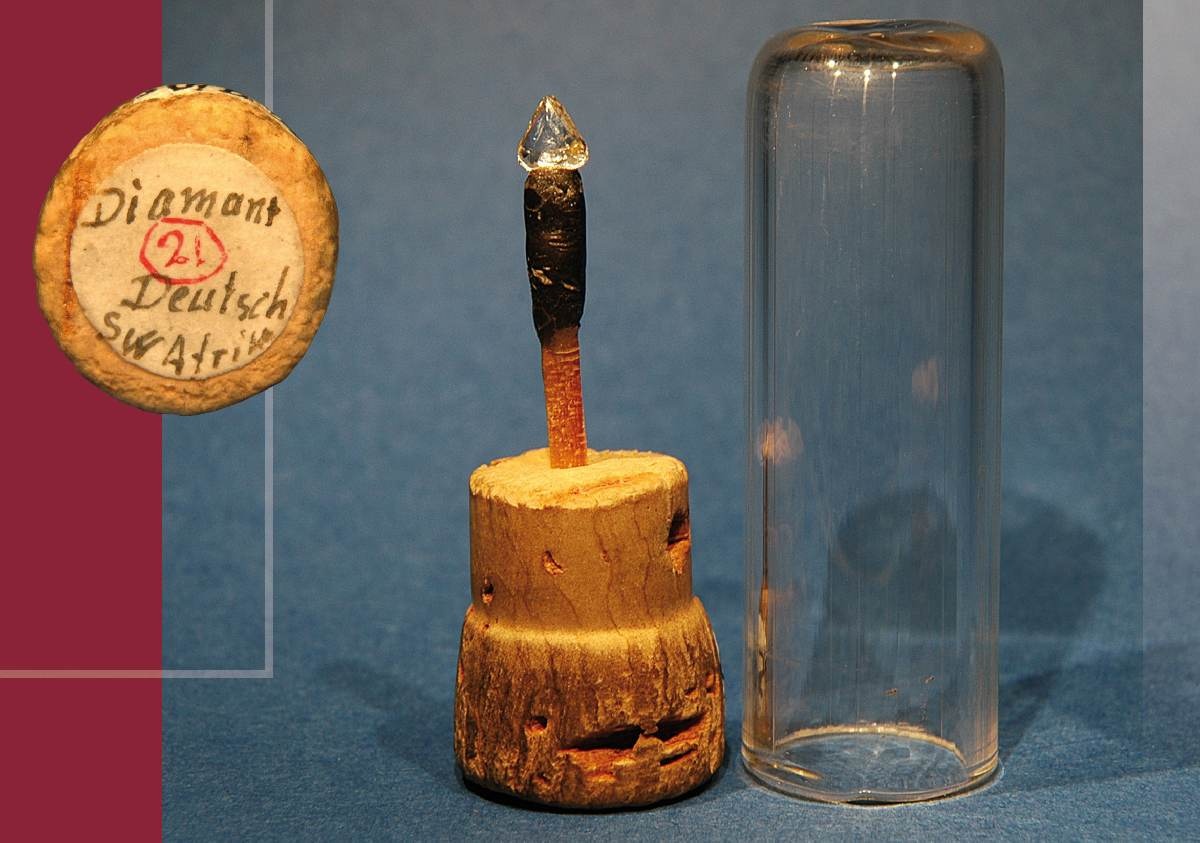Reiner Kohlenstoff erscheint glasklar als Diamantkristall. Dazu ist es auch noch ein Zwillingskristall, also zwei Diamantkristalle sind wie Siamesische Zwillinge miteinander verwachsen. Der dreieckige Naturkristall stammt aus der Sammlung von Prof. Dr. Hermann Franke. Er hat den Diamantzwilling genau vermessen und danach ein etwa 15 cm hohes Kristallmodell aus Pappe angefertigt. Das Naturhistorische Museum Schloss Bertholdsburg Schleusingen hat eine Kollektion von mehr als 400 derartigen Kristallmodellen, von denen einige in der ständigen Ausstellung zusammen mit den Originalkristallen gezeigt werden.
Provenienz: Sammlung Prof. Dr. H. Franke, Schleusingen
en

